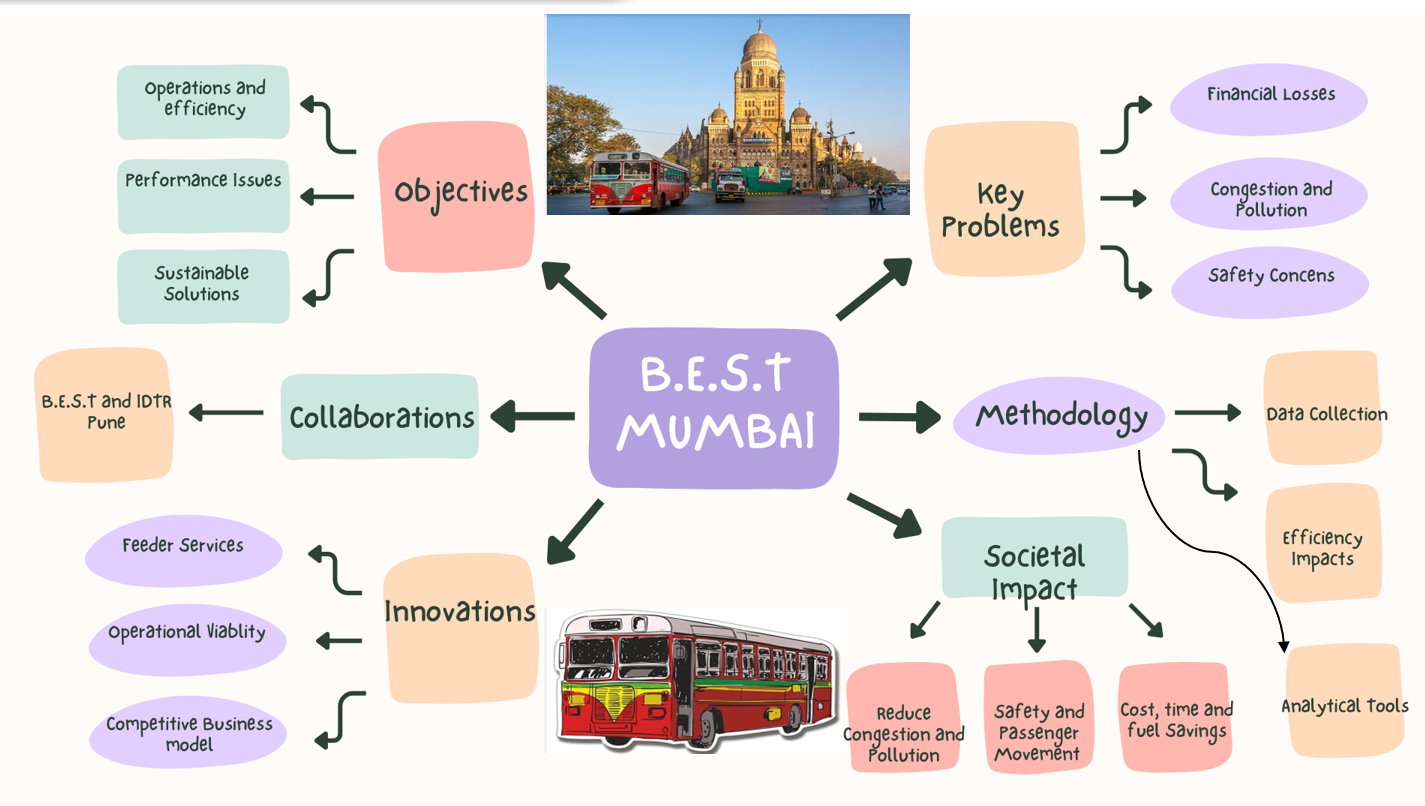Topic Name:
AN ECONOMIC ANALYSIS OF B.E.S.T. IN MUMBAI WITH SPECIAL REFERENCE TO PHYSICAL AND FINANCIAL PERFORMANCE FOR SUSTAINABLE BUSINESS

Objectives
- Analyze and Address the Operational Challenges of B.E.S.T.:
To identify and evaluate the key physical and financial challenges faced by B.E.S.T. in its day-to-day operations, leading to performance decline and financial losses.
- Examine the Impact of Increased Traffic on Public Transport:
To investigate the effects of rising private vehicle usage on road congestion, pollution, and overall passenger safety, and recommend solutions for improving the public transport system.
- Assess the Efficiency of B.E.S.T.’s Operational Model and find solutions to optimize performance:
To study and measure the physical efficiency of B.E.S.T.’s operations, including fleet management, routes, and schedule adherence, to optimize performance using possible ICT-based Model:
- Evaluate the Financial Sustainability of B.E.S.T.:
To analyze the financial performance of B.E.S.T., identifying areas for cost reduction, revenue enhancement, and long-term financial sustainability.
- Propose Policy and Strategic Recommendations for Sustainable Operations:
To develop actionable policy guidelines and strategic recommendations to improve B.E.S.T.’s operations, reduce congestion, and enhance passenger movement, contributing to long-term sustainability and better public transport service.
Issues-
- Rising operational costs (fuel, wages, maintenance).
- Low fare recovery and increasing losses.
- Policy gaps in integration with other modes of public transport.
- Aging fleet and maintenance issues.
- Inadequate or outdated technology for operations and monitoring.
- Poor route optimization leads to inefficiency.
- Workforce-related challenges such as lack of training or overstaffing in certain areas.
- Inefficient scheduling and route planning.
- Low utilization of fleet capacity.
- Limited avenues for additional revenue generation (e.g., advertising or partnerships).
- Subsidy dependency and budgetary constraints.
- Weak financial forecasting and investment planning.
Team Lead-
Name -Dr. Mahendra Parihar
Email ID- mahendra.parihar@nmims.edu
Team Members
Name- Dr. Abhishek Kumar Sinha
Email ID- abhishekkumar.sinha@nmims.edu
Name- Awaited
Email ID-Awaited

